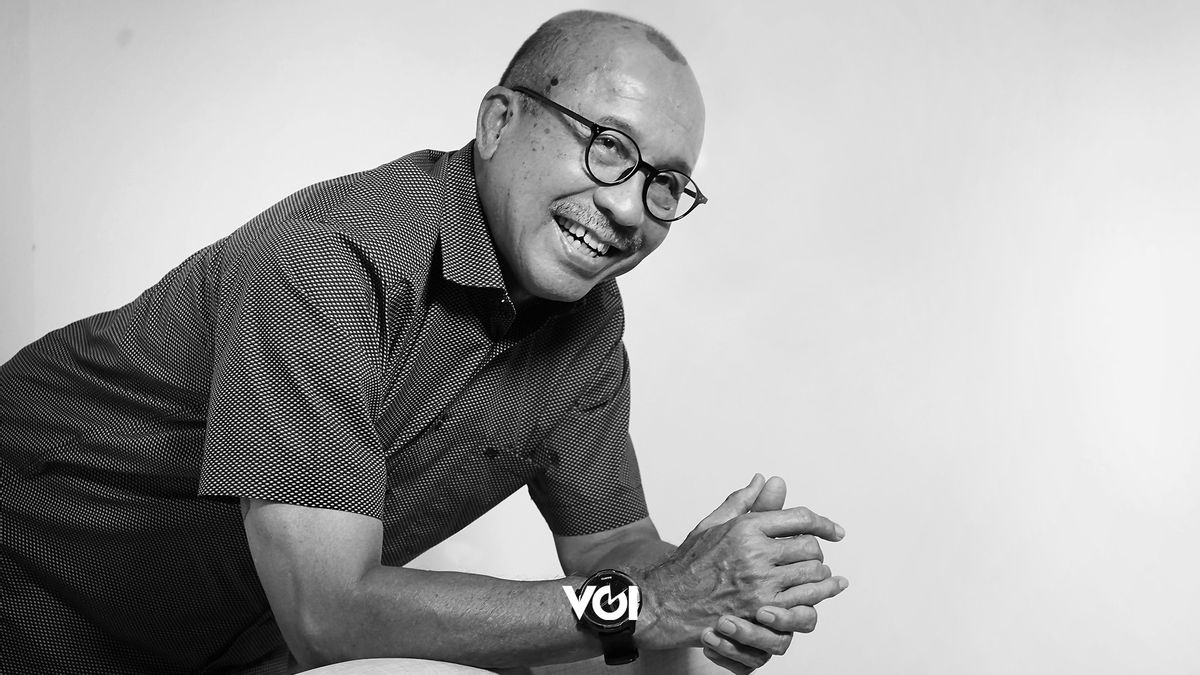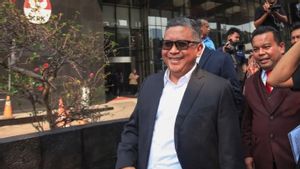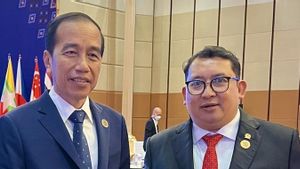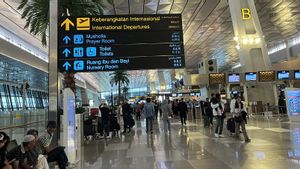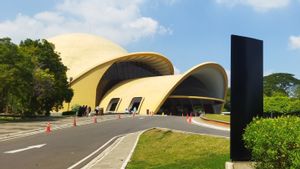While all sectors are trying to switch to green energy to achieve net zero emissions, it turns out that the bauxite mining sector is not ready. According to the General Chairperson of the Indonesian Bauxite and Iron Ore Entrepreneurs Association (APB3I), Ronald Sulistyanto, this condition is still a big challenge for bauxite mining. However, in the future, when bauxite mining is ready, they will also use new and renewable energy.
***
Currently, bauxite mining, continued Ronald Sulistyanto, is facing major challenges. One of them is the production costs that will increase if green energy is used. "Bauxite entrepreneurs have not been able to do it. We look at China, at the beginning of their industry they also used fossil fuels. Now that their industry has developed, they are talking about green energy. Currently, bauxite entrepreneurs have not been able to implement green energy, but in the future, I think they can," he said.
Another major challenge is when in 2023 the government issues a regulation prohibiting the export of bauxite ore. Like the nickel mining sector, bauxite is also asked to carry out a downstream process by building a bauxite smelter. The hope is that with downstreaming there will be added value from the processed products and also have a positive impact on many parties in the country. "When the downstream concept is applied to bauxite, that's a different story. Maybe the government hasn't realized it or is aware but pretends not to know, because bauxite is different from nickel," he said.
Serious problems still plague bauxite mining entrepreneurs who are members of APB3I. It is difficult to survive because their production is not optimally absorbed, while exports, which have been one of the revenue sources since 2023, have been banned. Of the many bauxite entrepreneurs, only one is able to build a smelter. Building a smelter requires a large area of land and large capital.
The state-owned banks that are expected to fund the construction of the bauxite smelter do not dare to provide credit. It seems that they are very careful with the proposals submitted by bauxite entrepreneurs. At times like this, according to Ronald Sulistyanto, the government should be able to act. "The government should intervene by releasing its assets to build a smelter, so that the law's orders can be implemented," he said to Edy Suherli, Bambang Eros, and Irfan Meidianto when visiting the VOI office on Tanah Abang III Street, Central Jakarta, recently. Here is an excerpt.

The government's ban on bauxite ore exports was criticized by the General Chairman of APB3I Ronald Sulistyanto, what will we eat if we can't export? (Photo: Bambang Eros, DI: Raga Granada VOI)
Speaking of bauxite, how much national bauxite has been produced in the last two years? Where are the bauxite mining centers in Indonesia?
Currently, the areas with the most bauxite mining are the Riau Islands and West Kalimantan. Apart from these two areas, it is also distributed in Central Kalimantan. However, the main ones are the Riau Islands and West Kalimantan. National bauxite production according to data from the Ministry of Energy and Mineral Resources in 2022 reached 27.5 million tons. A year later, there was a ban on bauxite exports, so production only reached 13.5 million tons.
Apart from being made into aluminum, what else can this bauxite be made into?
In the first stage, bauxite is processed into alumina, which is in the form of a white powder resembling granulated sugar. When heated in a vessel at a certain temperature, the alumina will melt and produce aluminum.
The government prohibits the export of raw bauxite, so it must be processed first and what is called downstreaming occurs, how is it implemented?
Before there was downstreaming in bauxite, the downstreaming that was exposed first was nickel. Nickel is prohibited from being exported and entrepreneurs are asked to carry out downstreaming. The purpose of this downstreaming is so that there is added value from the exported nickel ore raw materials, then processed into semi-finished materials. At that time, many were competing to build smelters, so there was a moratorium to rearrange which ones really had to exist and which ones had to be postponed so as not to be excessive.
When the downstreaming concept was applied to bauxite, it was a different story. Maybe the government had not realized it or was aware but pretended not to know, because bauxite is different from nickel. Nickel has many derivatives, while bauxite only produces alumina. The cost for a bauxite smelter is very large, reaching 1.2 billion US dollars, and the land required reaches 800 hectares. In a nickel smelter, the cost is not that big, ranging from 100 million to 200 million US dollars. From the mandate of Law No. 4 of 2009, only one can implement it because it is very difficult.
Since when has the export ban been enforced?
In 2014, bauxite exports were stopped, so bauxite mining died. In 2017, there was another export permit, but with the condition that if the value was good, an export permit would be obtained. So it's not just now that there is a ban on bauxite exports. In 2019, COVID-19 hit, and bauxite mining stopped again. The conditions for bauxite entrepreneurs are getting more difficult.
For the 2023 bauxite export ban from the government, has it been effective?
The basis for this regulation is Law No. 3 of 2020. However, until now only one has been able to build a smelter, while the others are still struggling.

The aspirations of entrepreneurs who are members of APB3I according to Ronald Sulistyanto are to ask for a review of the ban on bauxite exports, while preparing for downstreaming. (Photo: Bambang Eros, DI: Raga Granada VOI)
This means that the good intention for downstreaming turns out to have obstacles in the field, what are they?
I think entrepreneurs agree with downstreaming, because this concerns the dignity of the nation. However, the obstacles faced by entrepreneurs must also be heard. The government must foster entrepreneurs, not destroy them. How to foster them, let's talk about it. If downstreaming is not in accordance with the government's wishes, let's fix it or re-plan it. If this program cannot be implemented, it means there is a problem.
So the obstacle is that this bauxite downstreaming program cannot be implemented?
The main thing is the issue of financing, then the issue of licensing and legal certainty. Investors invest a lot of money. It is natural that they are worried about the security of funds and of course the profits from this business.
Banks that are members of Himbara (Association of State-Owned Banks) are reluctant to fund the construction of bauxite smelters, is it because they do not meet business feasibility or is there another reason?
My guess is that they are very careful about the principle of caution. However, what must be remembered is that this bauxite downstreaming is a government program and is guaranteed by the government. If Himbara alone considers this smelter project to be unfeasible, it means there is a contradiction. We are required to build a smelter, but on the other hand our proposal was rejected by a state-owned bank. If Himbara Bank refused, let alone a foreign bank. The government should have stepped in by providing assets to build a smelter. So, the law's order can be implemented.
Apart from Himbara Bank, have you tried other private banks or foreign banks operating in Indonesia for funding?
Private banks have limited funds, they have to raise syndicates with other banks. Foreign banks are the same. The Chinese government also supports its entrepreneurs, after they grow up they are released and they have "foster children." So entrepreneurs there are fostered.
Is it because the smelter is not finished, so there is a discourse to reopen the bauxite export tap?
After the ban on bauxite exports, entrepreneurs were ordered to build smelters. Entrepreneurs are scrambling to find funds. Currently, the financial condition of entrepreneurs is not so good. If there is export relaxation, that gives a little hope. Equity can improve and we can attract investors to come in.
So the hope is still there, right?
Yes, the hope is still there, then employees who are laid off can go back to work. And MSMEs and partners involved in mining can also be helped. All lines are back to being lively.
Your estimate, when can downstreaming by building bauxite smelters be realized?
My estimate is, at the earliest 10 years. There are also those who argue that if exploration continues, bauxite reserves will eventually run out. Our bauxite reserves are estimated to reach 1 billion metric tons. And what needs to be noted is that technology continues to develop. There will be new materials that are cheaper, environmentally friendly, and so on that can be substitutes. For example, in nickel, now there are other materials that can be used for electric vehicle battery materials.
Are there any efforts to involve MSMEs and small industries in this bauxite downstreaming?
MSMEs can be involved in supplying food ingredients needed by mining and bauxite smelters. However, for MSMEs that utilize bauxite products such as for crafts, there are none yet. At most, the remaining mining can be used for stockpiling.
Have bauxite entrepreneurs used green energy in mining and production?
Currently, bauxite entrepreneurs cannot use green energy. Let's look at China, in the early days of their industry they also used fossil fuels. Now that the industry has developed, they are talking about green energy. For now, bauxite entrepreneurs cannot implement green energy. However, in the future after the bauxite industry is more developed, I think this can be implemented.
Has the bauxite mining implemented the concept of sustainable mining?
There is a reclamation program, where entrepreneurs save a certain amount of funds for reclamation guarantees. The funds can be withdrawn if reclamation has been carried out. Bauxite mining is not too deep, only about 3-4 meters, and is an open pit mine. So, it does not disturb the environment too much, unlike coal which can be tens of meters below the surface. After reclamation, we carry out regrading and planting on former mining land.
What are your hopes for the downstreaming and export relaxation programs?
Our desire, as bauxite entrepreneurs, is to be able to work calmly without fear of difficult regulations. We hope to be able to sell the results of our efforts at a reasonable price. If the government sets a certain limit for mining that must be realized by entrepreneurs, then if it is not achieved there must be sanctions. Thus, business will be more enthusiastic. Entrepreneurs need guidance from the government. After growing, entrepreneurs can help and contribute to the country.
Ronald Sulistyanto Successfully Creates a Hiking Trail in the Alps

Since he was young, Ronald Sulistyanto has indeed liked outdoor activities such as mountain climbing. (Photo: Bambang Eros, DI: Raga Granada VOI)
After being busy at the office, the General Chairman of the Indonesian Bauxite and Iron Ore Entrepreneurs Association (APB3I) Ronald Sulistyanto has a hobby of mountain climbing. He has summited almost all the mountains that are usually climbed in the country. He has also conquered famous mountains abroad. Amazingly, he managed to create one of the climbing routes in the Alps, Europe, which is recognized as the 13th route.
Since he was young, Sulis - as he is usually called - has had a hobby of adventuring in the open air. "I really like adventures in the open air. My hobby is mountain climbing, a challenging sport in the open air," said the man who is already in his seventies.
According to him, there are three stages in pursuing this sport. First, hiking, which is walking in a hilly area with sneakers. Second, mountaineering, which involves climbing with a slope of 50 or 60 degrees, more seriously. And third, the special one is rock climbing. In practice, using various special tools because the terrain is very difficult.
What needs to be straightened out, Sulis emphasized, is that climbing any mountain must pay attention to safety factors from the start. "You shouldn't climb a mountain just by being reckless. If you do that, you could die stupidly. So, pay close attention and prepare before climbing. Pay attention to the weather, food intake, equipment used, and so on," said Sulis, who continued his studies in Civil Engineering at ITB after graduating from high school.
Because it's a hobby, he has climbed almost all the mountains that are often climbed by mountain climbers in Indonesia. "For Indonesia, I have climbed almost all the mountains, because I have a hobby. In the past, every weekend I would climb mountains," he recalled. However, now, because he is no longer young, the intensity of climbing has decreased.
Luckily, he had a study assignment in Switzerland in the field of surface water management. After completing his education and still having time left, he used it to study Rock Climbing Techniques for 1 month in Leysin. In the Alps there are several very challenging peaks, including Mont Blanc, Grandes Jorasses, Matterhorn and Eiger.
Make a Route on the Peak of Eiger

In the world of rock climbing, Ronald Sulistyanto is no joke. He even managed to create his own route at the peak of Eiger. “I happened to have the opportunity to create the most dangerous route. It’s called the 13th route at the peak of Eiger. The route I created was recognized as one of the routes there, another name is the Indonesian Route. At that time, the person who documented my climb was a senior TVRI journalist, Hendro Subroto,” he said, while adding that currently there are around 27 recognized routes at the peak of Eiger.
Indeed, not just anyone can create a route at the peak of Eiger because the terrain is difficult and the location is narrow. “The peak of Eiger is narrow, like a slice of bread. So it’s perpendicular, and climbing it takes quite a long time,” said Sulis, who now serves as Assistant Director at PT Laman Mining.
In addition to the peak having a steep slope that is almost perpendicular, the cold weather is a challenge in itself, especially for people who come from tropical areas like Sulis. “The air temperature can reach -7 degrees. It's so cold, when I want to take a pee it's the most troublesome thing," he said.
Conquer the Himalayan Peaks

Ronald Sulistyanto has also conquered the Alps and Himalayas, even at the peak of the Eiger North Face in the Alps he created route no. 13 which is also called the Indonesian route. (Photo: Bambang Eros, DI: Raga Granada VOI)
The highest mountain range in the world, the Himalayas, which is the target of professional mountain climbers, is also not free from Ronald Sulistyanto's target. "Initially it was just for a survey, eh because we were already there we continued climbing. Just like in the Alpen Club, there are also many popular peaks at the top of the Himalayas, the most famous of course Mount Everest," he said.
The routes to the Himalayas are also countless. Some are from Tibet, Bhutan, China, Nepal. "We can choose which route is suitable to reach the top of the Himalayas," said Sulis who climbed the Himalayas in the early 1980s.
The rations brought have also been prepared neatly, complete with their respective labels. "So, we can't be picky about what we want to eat on the climb. The main thing is to consume food that has been prepared exactly according to the label. Because food has been calculated to reach the top," said Sulis, who was able to succeed in the mining world even though he majored in Civil Engineering while in college. The key is hard work, perseverance and sincerity.
Reaching Mount Everest, according to Sulis, is difficult because of the rapidly changing weather and the equipment needed for the climb.
“Regarding climbing techniques, thank God I have mastered them. However, the hardest thing is dealing with the weather that changes very quickly. Therefore, strategic planning must be really mature. Moreover, in my time there were no sophisticated weather applications like today. Now everything is in the palm of your hand. In the past we relied on the radio,” concluded Ronald Sulistyanto.
"I think entrepreneurs agree with downstreaming, because it concerns the dignity of the nation. But the obstacles of entrepreneurs must also be heard. The government must foster entrepreneurs, not destroy entrepreneurs. How to foster them, let's talk about it. If downstreaming is not in accordance with the government's wishes, let's fix it or re-plan it. If this program cannot be realized, it means there is a problem,"
The English, Chinese, Japanese, Arabic, and French versions are automatically generated by the AI. So there may still be inaccuracies in translating, please always see Indonesian as our main language. (system supported by DigitalSiber.id)
